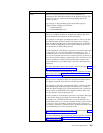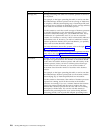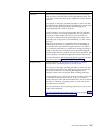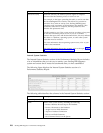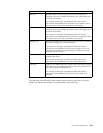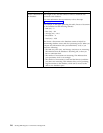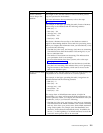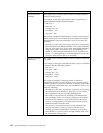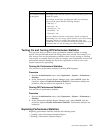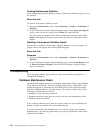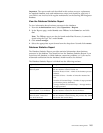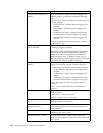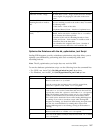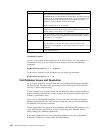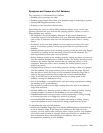
Statistic Name Description
Execute an XPath
Statement
The length of time and the number of times an XPath statement
ran in a business process.
For example, in the figure preceding this table, Assign from an
XPath Statement had the following statistics:
v Min (ms) – 1
v Max (ms) – 43
v Average (ms) – 5.0
v Invocations – 111
v Total (ms) – 598
This statistic is helpful in determining if you have well-structured
XPath statements in your business processes. When you compare
this information with your benchmarks, verify if you notice the
following:
v The Min (ms), Max (ms), and Average (ms) times are increasing.
This indicates that the XPath statement is not written efficiently,
and may slow down your process time. Write XPath statements
using relative paths. For example, write PurchaseOrder/text
instead of /ProcessData/PurchaseOrder/text(). In addition, do
not use // at the beginning of an XPath statement, because this
causes the entire process data to be traversed.
Acquire a Database
Connection
The length of time and the number of times a database connection
was made.
For example, in the figure preceding this table, Acquire a Database
Connection had the following statistics:
v Min (ms) – 1
v Max (ms) – 4990
v Average (ms) – 3.0
v Invocations – 16102
v Total (ms) – 57722
The Acquire a Database Connection statistic is helpful in
determining whether you have database issues, resource leaks, or
whether you have to increase the number of database pools. When
you compare this information with your benchmarks, verify if you
notice the following:
v The Min (ms), Max (ms), and Average (ms) times are increasing.
This indicates that the database is quite active if it is used by
other applications outside of Sterling B2B Integrator.
v The number of invocations are increasing. This indicates that
your persistence level is set too high, causing too much data to
be stored in the database, or your cache levels are not tuned
correctly, causing the data to be stored and retrieved from the
database instead of from the cache.
v The number of invocations are low and not increasing. This
indicates that either you have a resource leak that is not
releasing previously used database connections to be used by
other threads, or you do not have enough database pools set in
the Performance Tuning Utility.
212 Sterling B2B Integrator: Performance Management




